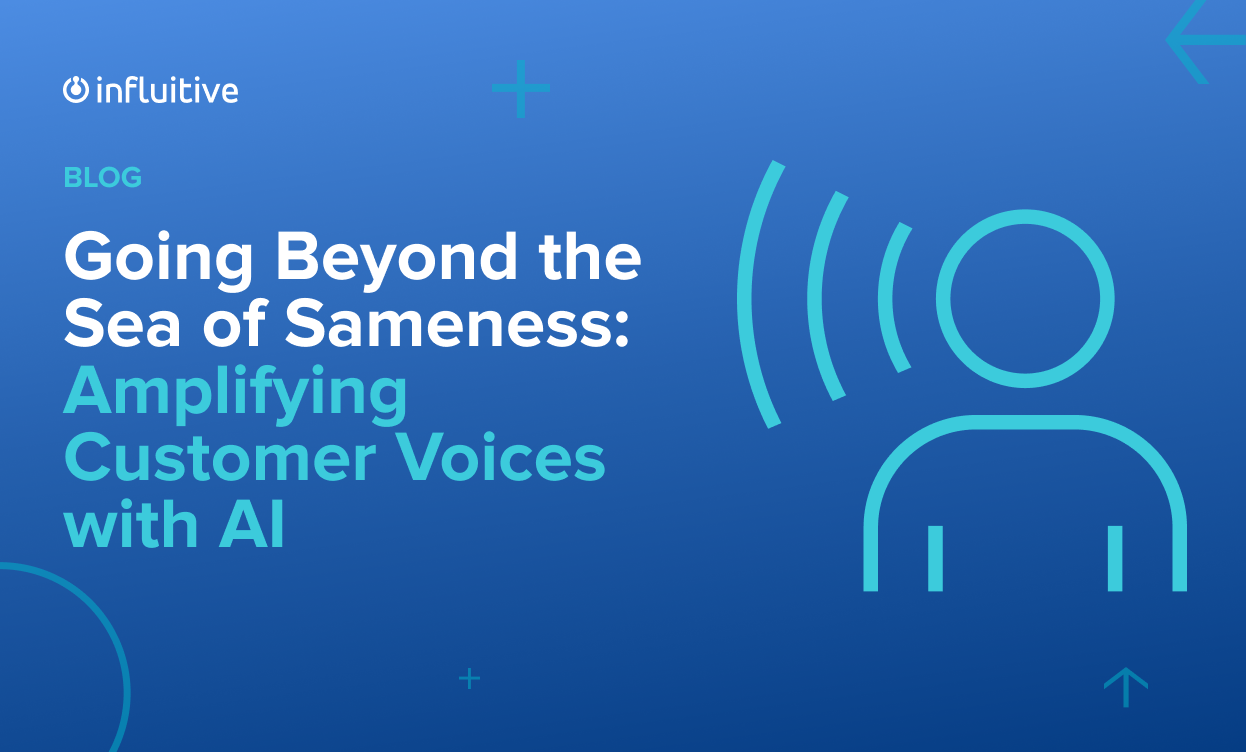All About the Customer subscribers saw this post first. To get advanced access to exclusive content, be sure to subscribe today!
Who remembers the internet sensation “Is it Cake?” You know, the viral videos with deceptively realistic cakes that looked like everyday objects? It captivated audiences not only because it was fun to guess, but it was also because it was actually challenging to tell the difference.

Credit: Courtesy of Netflix | Copyright: © 2022 Netflix, Inc.
I’d argue a new guessing game has emerged in the world of B2B marketing: “Is it AI?” As businesses seek innovative ways to stay ahead of the competition and arm their products and customers with AI, the “sea of sameness” on your social media feeds and inbox continues to grow. Sometimes it’s easy to discern content as AI vs human-driven, especially when the content is company-first, but do you know what will always stand out? The authentic voice of your customers!
Those in customer marketing and advocacy have been beating this drum for years, but now is the time to get a little louder because, in this sea of sameness where AI is helping companies create more sub-par content than they know what to do with, there has never been a better time to differentiate yourself and your offering than by leveraging the voice of your customer (VoC). But can AI actually help you do this?
In this article, we’ll explore the pitfalls you need to avoid when pairing AI and VoC, how AI can enhance your customers’ voice, and what you can do to stand out in the sea of sameness and make your mark on the bottom line.
AI Pitfalls to Avoid
Before diving into the ways AI can enhance customer engagement, it’s important to address the elephant in the room: AI is not the enemy, it’s people who use it wrong who are the problem. Employed with the right intentions, AI can be a powerful tool that streamlines processes and enhances customer experiences. However, it’s crucial to tread carefully and ensure that AI is not used in a way that depersonalizes or exploits customers.
Here are a few pitfalls to avoid:
Neglecting Human Creativity: While AI can generate ideas, it cannot replace human creativity. Relying solely on AI for creativity can lead to a lack of originality and innovation. You need to spend the time crafting a great prompt that infuses your creativity into the process so that AI can bring it all together for you.
Relying on AI Too Heavily for Content Creation: AI algorithms learn from existing data, which can result in generating content that follows the patterns of popular trends. We don’t want to ADD to the sea of sameness, and that includes using AI to generate replies to LinkedIn posts (you’ll know one when you see it, and it is truly cringe-worthy).
Treating AI Outputs as Final: AI-generated content is a valuable starting point, but it should never be your final draft. B2B marketers are creative, so use that human touch to infuse emotions and context into the messaging, while ensuring authenticity and empathy.
Using AI to Enhance the Customer Voice
Here are a few ways AI can help you enhance your VoC outputs:
Summarize Conversations and Feedback: AI can be a game-changer in collecting and analyzing customer feedback from webinars, interviews, and other interactions. This data can provide valuable insights, helping businesses understand customer preferences and pain points better.
Repurpose Case Studies and Customer Stories: AI can assist in crafting compelling narratives and summarizing case studies, making them more accessible and engaging for various marketing efforts. You can ask it to pull out share-worthy quotes and stats, create a before and after summary, and re-purposed social content to help your friends in content marketing maximize promotional efforts
Optimize Customer Communications: Responding to customer emails and inquiries efficiently is vital for any customer-centric organization and AI can assist in generating quick and personalized responses, enhancing the overall customer experience. It can also help you deliver difficult news too such as sunsetting features, being unable to fulfill a request or when a customer does not win an award or contest they entered.
Synthesize Zero-Party Data: To make the most of AI, businesses should focus on feeding it credible, zero-party, and value-rich content. Zero-party data, provided directly by customers, is highly valuable as it allows companies to offer personalized experiences without compromising customer privacy. AI can parse through this valuable content to create summaries and pull out common themes that can be used in future marketing material.
Don’t Forget about the Power of Video
While AI can enhance various aspects of customer engagement, there is one domain it can’t replicate– video. Video testimonials, interviews, and feedback capture the raw emotions and authenticity of the customer voice, making them invaluable assets for businesses. Repurposing such content across different platforms can amplify its reach and impact.
That said, AI tools can help you maximize the use of customer videos, by creating SEO-optimized titles, producing show notes, suggesting clips that can be made from a lengthy video, and more.
Conclusion
As businesses explore the capabilities of AI to harness the authentic voice of their customers, it is crucial to remember that AI should complement, and not replace, human creativity and empathy. The power of AI lies in its ability to streamline processes, analyze data, and generate ideas, but the heart and soul of a brand will always reside within the genuine connections its employees forge with its customers.
Perhaps, while reading this article, you wondered to yourself, was this written by AI? Let the guessing games begin!













































